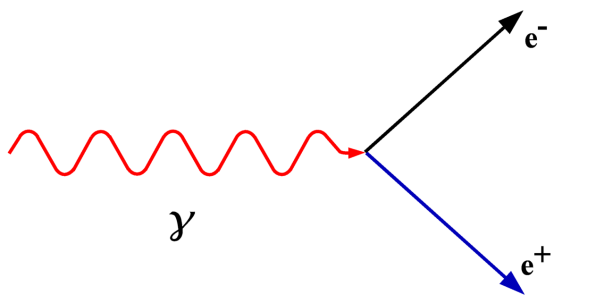There is more than one way to multiply two numbers together.
Normal everyday multiplication (e.g.  ) isn’t always good enough for physics. If we want to multiply two vectors (quantities that have both size and direction) like force or velocity, then the direction of those vectors matters. The result of a 3 N force multiplied by a 4 N force will depend on their relative directions: if they are pointing in the same direction we will get a different answer to if they are at right angles to each other.
) isn’t always good enough for physics. If we want to multiply two vectors (quantities that have both size and direction) like force or velocity, then the direction of those vectors matters. The result of a 3 N force multiplied by a 4 N force will depend on their relative directions: if they are pointing in the same direction we will get a different answer to if they are at right angles to each other.
When multiplying two vectors, physicists use one of two products: the dot product or the cross product. Both the moment of a force (the torque) and the work done by a force are calculated by finding the product of a force and a distance, but calculating work done uses the dot product and calculating the moment of a force uses the cross product.
The dot product yields a scalar answer, an answer that does not have a direction. Work done is a scalar quantity, and doesn’t have a direction, hence the use of the dot product. The cross product yields a vector answer, which does have a direction (if you’ve ever used Fleming’s Left Hand rule to find the force acting on a current-carrying wire in a magnetic field you’ve found the cross product of those two vectors). The moment of a force does have a direction, hence the use of the cross product.
Unlike “normal” multiplication and the dot product, the cross product is not commutative, i.e. it matters in which order you multiply quantities. If we find the cross product of two forces,  and
and  then we will get a different answer to than if we had found the cross product of
then we will get a different answer to than if we had found the cross product of  and
and  , i.e.
, i.e.  . This makes sense when you consider the vector nature of the cross product: a vector to the right multiplied by a vector upwards shouldn’t produce the same result as a vector upwards multiplied by a vector to the right: the result has the same magnitude, but points in a different (opposite) direction.
. This makes sense when you consider the vector nature of the cross product: a vector to the right multiplied by a vector upwards shouldn’t produce the same result as a vector upwards multiplied by a vector to the right: the result has the same magnitude, but points in a different (opposite) direction.

